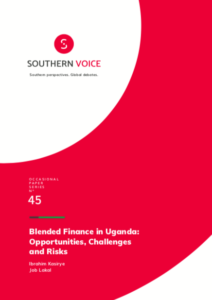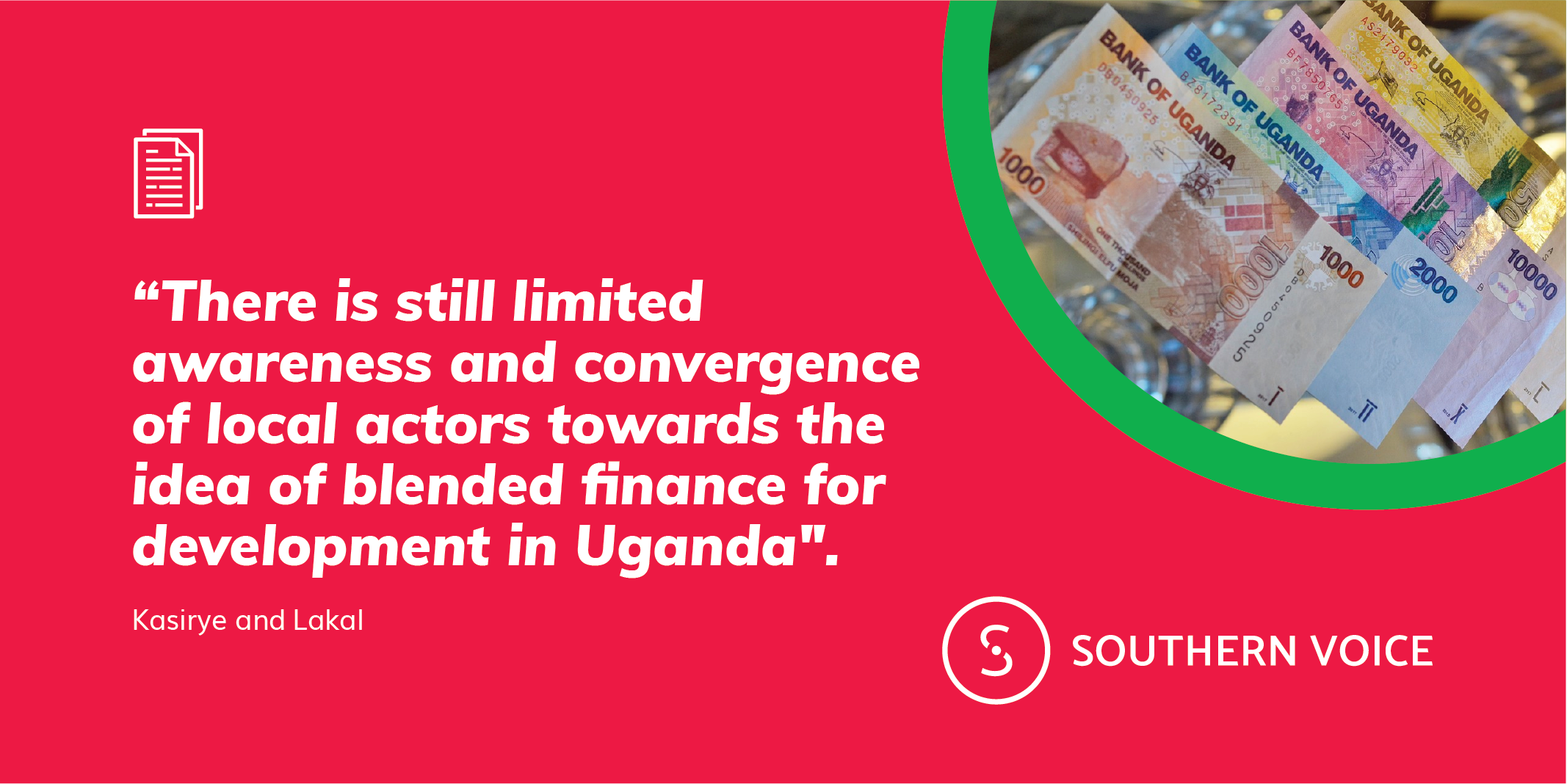Abstract
 This study explored the opportunities, challenges and risks concerning blended finance in Uganda. It reviewed and analysed Uganda’s national policy documents and other relevant national documents and interviewed national-level stakeholders including government officials, Civil Society Organizations and donors. The study found, that few Ugandans understand the term blended finance, but many know public-private partnerships, the dominant form in which blended finance is manifested in Uganda. Agriculture, energy and transport sectors dominate blended finance deals. The guarantee is the most common blended instrument being used, with increasing participation of domestic financial institutions in sustainable development. Blended facilities are however not targeting the poorest of the poor. The possibility of unfair competition among banks and different banks targeting the same individuals is high, and the latter could lead to duplication. Skills gaps in programme implementation and limited technical support for projects do affect the bankability of blended projects and significantly contribute to project delays. Nevertheless, foreign private investors have a keen interest in investing in Uganda, and the Uganda Government continues to be very supportive of the private sector. Uganda’s insurance industry and the National Social Security Fund could also prove significant partners of blended facilities if well incentivised.
This study explored the opportunities, challenges and risks concerning blended finance in Uganda. It reviewed and analysed Uganda’s national policy documents and other relevant national documents and interviewed national-level stakeholders including government officials, Civil Society Organizations and donors. The study found, that few Ugandans understand the term blended finance, but many know public-private partnerships, the dominant form in which blended finance is manifested in Uganda. Agriculture, energy and transport sectors dominate blended finance deals. The guarantee is the most common blended instrument being used, with increasing participation of domestic financial institutions in sustainable development. Blended facilities are however not targeting the poorest of the poor. The possibility of unfair competition among banks and different banks targeting the same individuals is high, and the latter could lead to duplication. Skills gaps in programme implementation and limited technical support for projects do affect the bankability of blended projects and significantly contribute to project delays. Nevertheless, foreign private investors have a keen interest in investing in Uganda, and the Uganda Government continues to be very supportive of the private sector. Uganda’s insurance industry and the National Social Security Fund could also prove significant partners of blended facilities if well incentivised.


